|
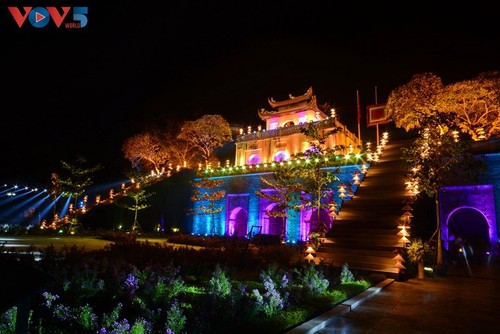
In 1010, King Ly Thai To moved the capital from Hoa Lu in the northern province of Ninh Binh to Dai La citadel, which was later renamed as Thang Long, now Ha Noi. A new citadel was built consisting of a Forbidden City within two sets of walls. At the outer area was the Imperial City (Kinh Thanh in Vietnamese) and the Imperial Citadel (Hoang Thanh). Through many dynasties, the citadel still existed with pavilions, pagodas, towers, and palaces. The citadel has 4 main gates: Tuong Phu in the east, Quang Phuc in the west, Dai Hung in the south, and Dieu Duc in the north.
|
|
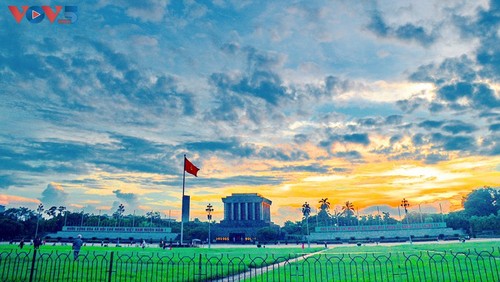
Hanoi’s Ba Dinh Square has witnessed many important milestones in Vietnam’s history. On September 2, 1945, President Ho Chi Minh read the Declaration of Independence giving birth to the Democratic Republic of Vietnam, now the Socialist Republic of Vietnam. Ba Dinh Square is 320 m in length and 100 m in width, with a total of 210 fields of grass. This is where big parades are organized to mark Vietnam’s important holidays and occasions, and also a place for Hanoians to visit and gather for sightseeing and walking.
|
|
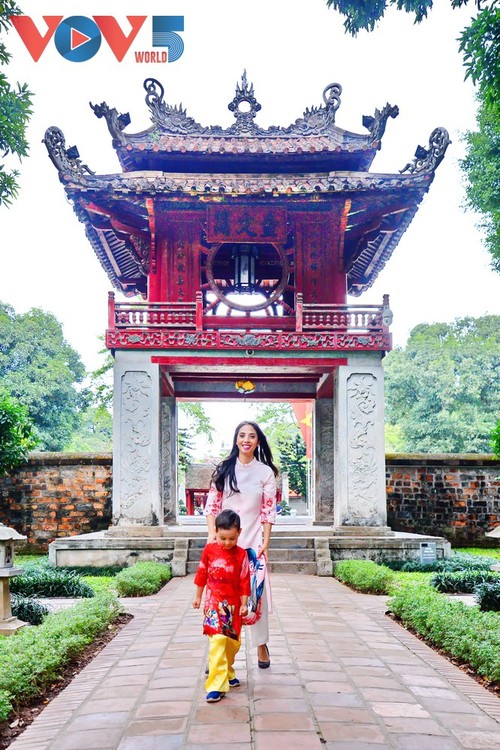
Another typical symbol of Hanoi is Khue Van Cac or the pavilion of the constellation of literature in Van Mieu - Quoc Tu Giam (the Temple of Literature). Khue Van Cac was erected under the reign of the Nguyen dynasty in 1805 as a place for classic poetry review. The pavilion is a two-storey complex with layered structure, eight sloping roofs and a square basement. The upper floor, made of wooden frames has its banister engraved with eight sacred objects. With four round windows facing the four directions, Khue Van Cac attracts sun light to give it a glow like a shining constellation.
|
|
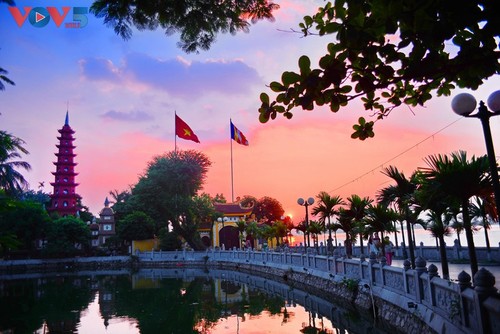
Another relic that visitors to Hanoi should not miss is Tran Quoc Pagoda. The pagoda was built in the reign of King Ly Nam De (541-547), in Yen Hoa village, and named Khai Quoc. During the reign of King Ly Nhan Tong (1072-1128), the majestic pagoda was chosen as the venue for talks between Queen Mother Y Lan and high-ranking monks. National Geographic has listed Tran Quoc Pagoda among the world’s 20 most beautiful Buddhist temples.
|
|

Leaving Tran Quoc Pagoda and wandering along Hanoi’s Thanh Nien road, visitors can enjoy the beautiful scenery of one of the most popular lakes in Hanoi: West Lake. West Lake’s beautiful sunset has become an endless source of inspiration for musicians and poets.
|
Another great spot to enjoy Hanoi’s sunset is Long Bien Bridge. Built by the French from 1898 to 1902, Long Bien was the first steel bridge spanning the Red River and connecting Hanoi’s two districts of Hoan Kiem and Long Bien. The bridge has a length of 2,290m and 19 spans.
|
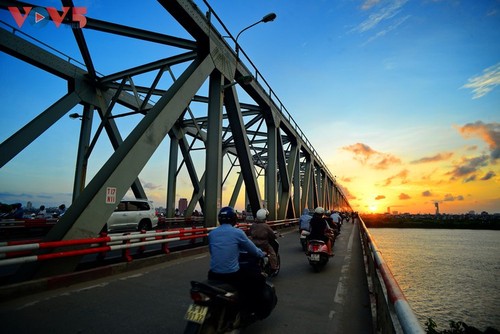 Not far from Long Bien bridge is Chuong Duong bridge. Built in the 1980s, Chuong Duong is the first bridge designed and constructed by Vietnam without foreign technical assistance. The bridge has a length of 1,230m with 21 spans. Not far from Long Bien bridge is Chuong Duong bridge. Built in the 1980s, Chuong Duong is the first bridge designed and constructed by Vietnam without foreign technical assistance. The bridge has a length of 1,230m with 21 spans.
|
|

Nhat Tan is a cable-stayed bridge spanning the Red River in Hanoi. It forms part of a new six-lane highway linking Hanoi and Noi Bai International Airport. The bridge is considered a new symbol of Hanoi with 5 cable-stayed spans representing Hanoi’s 5 doorways, and 5 peach petals of Nhat Tan peach village in Hanoi.
|
|
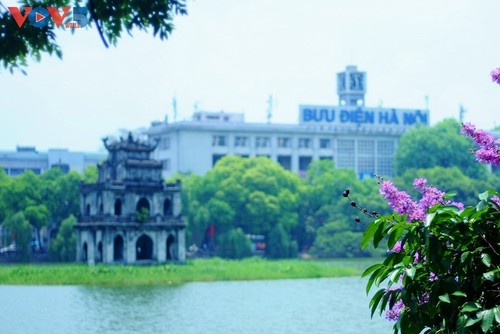
Hoan Kiem Lake (Sword Lake) is considered the heart of Hanoi. The name “Hoan Kiem” was dated back to the early 15th century, closely associated with the legend of King Le Thai To (1385-1433) returning a precious sword lent by the Turtle Genie after defeating the Chinese Ming invaders.
|
|

The Old Quarter is located on the northeast of Hanoi. The location of the old town is purposely between the imperial citadel and the red river which is considered an advantageous area for trade development. From the 13th century, the place began to attract craftsmen from all over the neighborhood areas who organized themselves into craft cooperatives and guilds. Inhabitants from the same villages flocked together and operated on the same street, giving the streets a homogenous look.
|
|
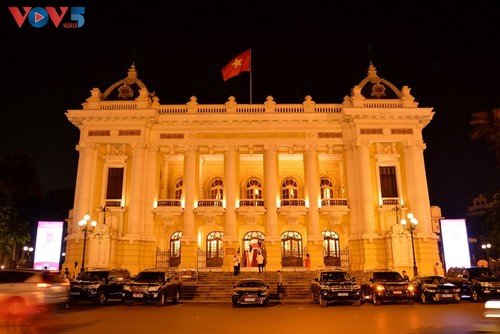
The Hanoi Opera House is a major architectural work in the capital city. The theatre is located on the August Revolutionary Square, not far from Hoan Kiem Lake. Since its completion, the Opera House has been one of Hanoi’s key cultural centers, where activities and performing arts regularly take place.
|
|
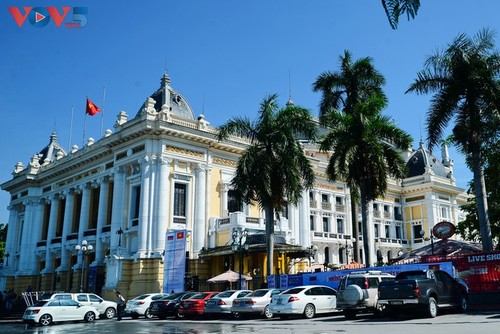
The beautiful Hanoi Opera House was built in 1911 by the French. It’s a phenomenal piece of neo-classical French architecture featuring Gothic themes on the doors and domes with pillars, shuttered windows, balconies and a glass room. The building was renovated from 1995 to 1997 in preparation for the Francophone Community Summit. Visitors today will be entertained by this architectural landmark which features a range of events including local Vietnamese opera, traditional folk music, ballets and many international concerts.
|
|
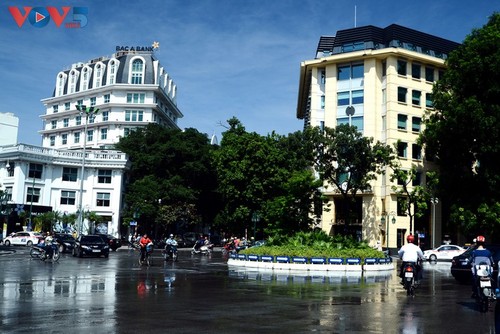
In addition to its many historical works, Hanoi boasts newly constructed buildings as it develops.
(Photo: Modern buildings near Trang Tien street - August Revolution Square)
|
|
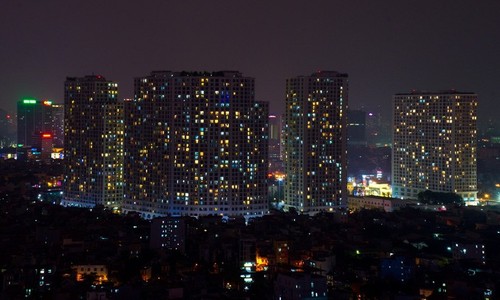
New urban areas such as Royal City, Time City, and Stars Lake with modern architecture, commercial centers and amusement parks have breathed new life into the thousand year-old capital city.
(Photo: Lights from apartments in the Royal City urban area)
|
|
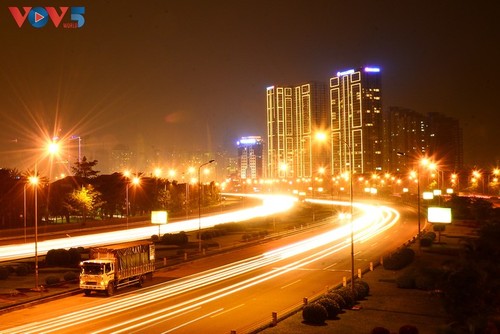
On the way from Thang Long Avenue to the city center, visitors will see high-rise modern buildings in shimmering light.
(Photo: Trung Hoa urban area seen from Thang Long Avenue)
|
|
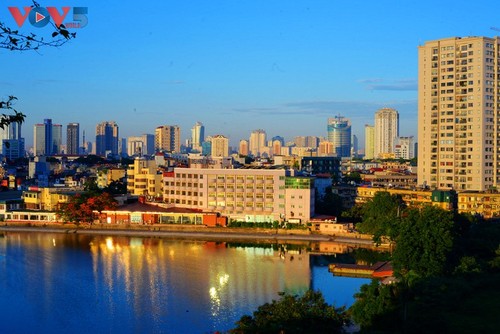
A ceremony was held on October 10 to commemorate the 1,010th anniversary of Thang Long - Hanoi (1010-2020). Enduring the upheavals of history, Thang Long – Hanoi has always stood firm and proud as the historical and heroic capital city of the entire nation.
|